The Vanishing Practice of Hunting with Golden Eagles in Mongolia
In the treacherous Altai Mountains in the far reaches of western Mongolia, golden eagles build their nests high up on rock faces.
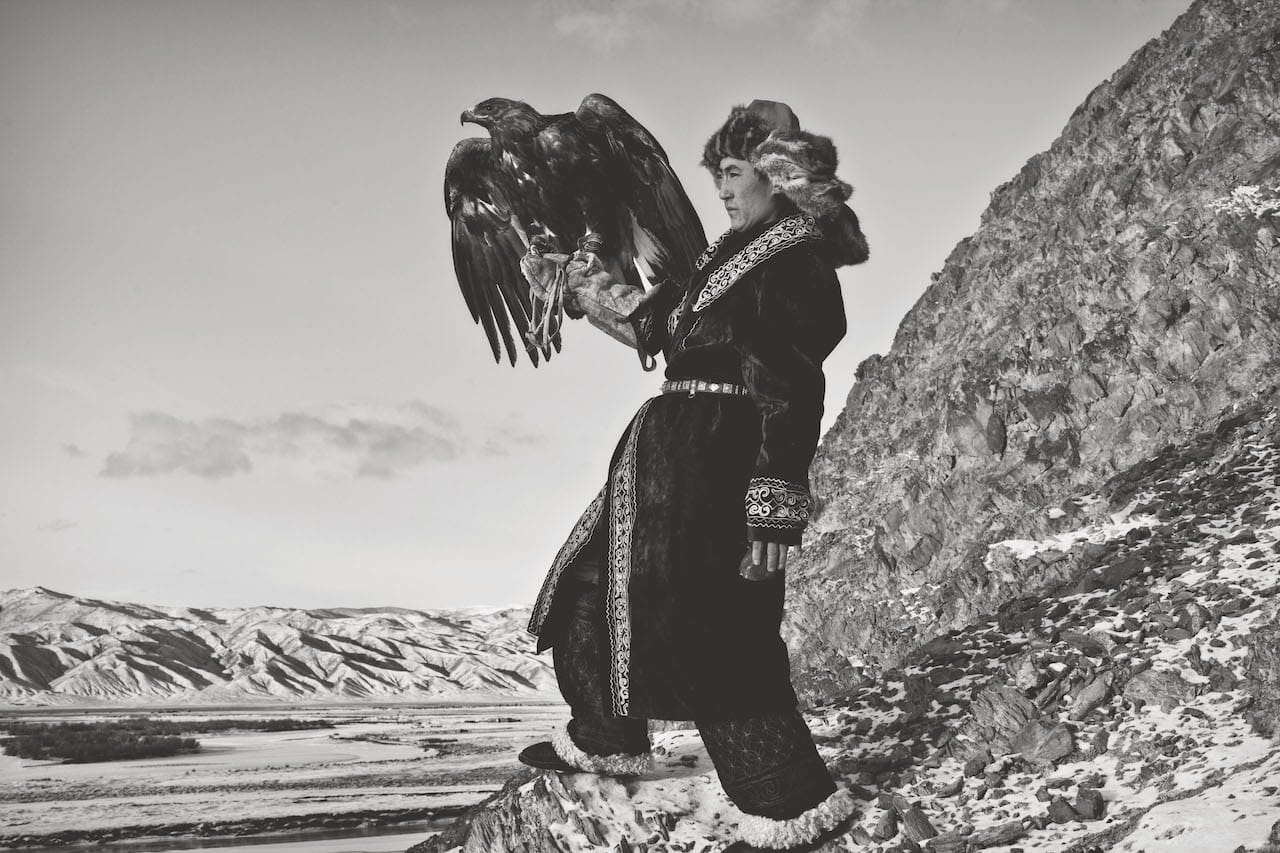
In the treacherous Altai Mountains in the far reaches of western Mongolia, golden eagles build their nests high up on rock faces. Every winter, nomads from the country’s Kazakh minority brave subzero temperatures and travel the mountains on horseback in search of young eaglets to take home and train as their hunting partners.
After maintaining this practice for hundreds of years, the burkitshi — as men who hunt with eagles are called in Kazakh — are slowly dying out. There are no more than 50 to 60 “true” hunters left, and each winter claims a few more. Young people are uninterested in the tradition and increasingly migrating to cities, like the polluted Mongolian capital of Ulan Bator.
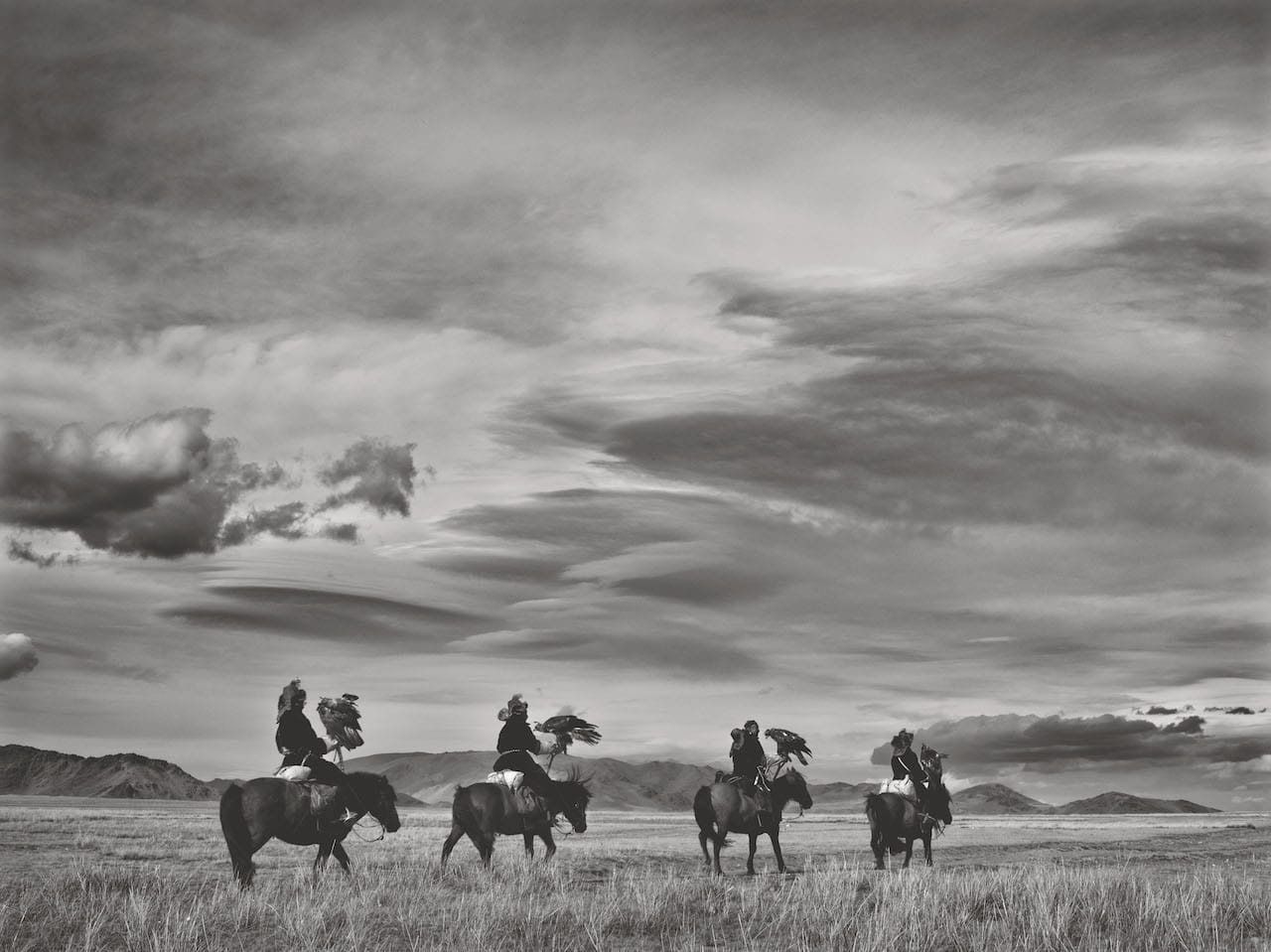
To document this endangered tradition, Australian-born, Hong Kong-based photographer Palani Mohan traveled to the Altais for five consecutive winters. Hunting With Eagles: In the Realm of the Mongolian Kazakhs compiles Mohan’s dramatic duotone photographs of the burkitshi and their feathered companions. The photographs read as a swan song for one of the few remaining human cultures living in harmony with nature instead of at war with it. They’re also an ode to interspecies collaboration.
“It is the bond between hunter and eagle that fascinated me,” Mohan writes in the book. “All the men I’ve spoken to describe the eagle as part of the family, even as their own child. The hunters all had stories about how they loved all their birds even more than their wives. And there’s a Kazakh saying that if a hunter’s father dies on the day the snow starts to fall, the hunter won’t be at the funeral because he’ll be up in the hills with his eagle.”
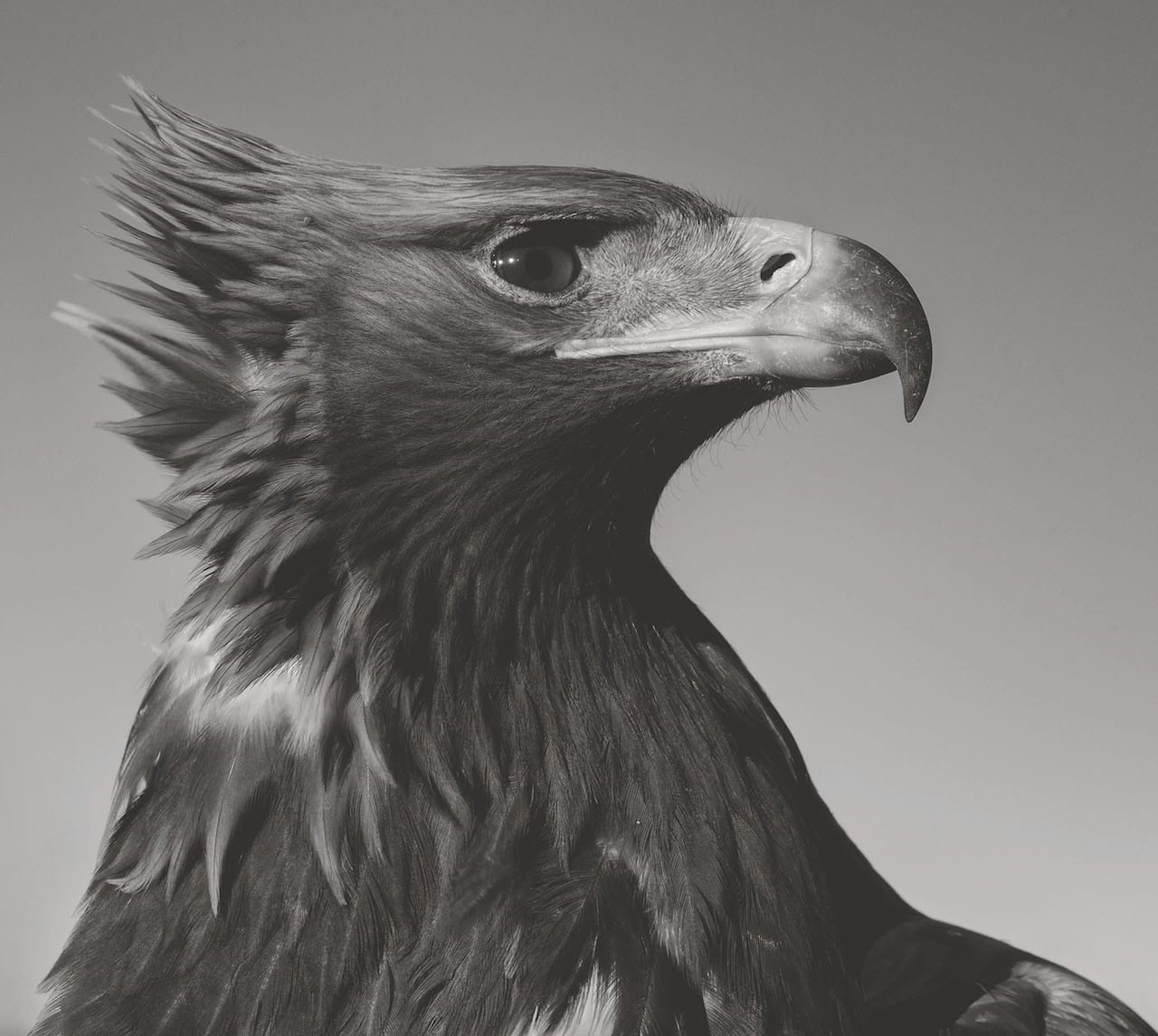
This intense relationship begins when a hunter takes an eaglet from its mother and back to his own home, promising to “love [the eagle] as his own.” There, he shrouds the bird with a leather hood (tomaga) to keep it calm, and begins hand-feeding it horse and yak meat. Once the bird learns to trust its feeder, it goes on its first hunt, which Mohan describes in the book:
The golden eagle is a perfect predator, with an awe-inspiring [eight-foot] wingspan. A fox is easy prey, and when hunting in pairs, eagles are capable of bringing down a wolf. … The birds are calm and exude confidence when they head into the hunt. After the tomaga is lifted from its head and it sees the fox in the valley below, the eagle takes its time waiting for the right moment. Then, without warning, it will raise its wings and dive like a bullet, leaving a rush of air in its wake as the hunter makes a screeching sound, urging it on. Within moments the eagle reaches its prey, sinking its claws through the fur and skin. Fox meat makes a welcome winter meal for the hunter and his family, while the pelt is kept as a trophy or made into hats and other items of clothing.
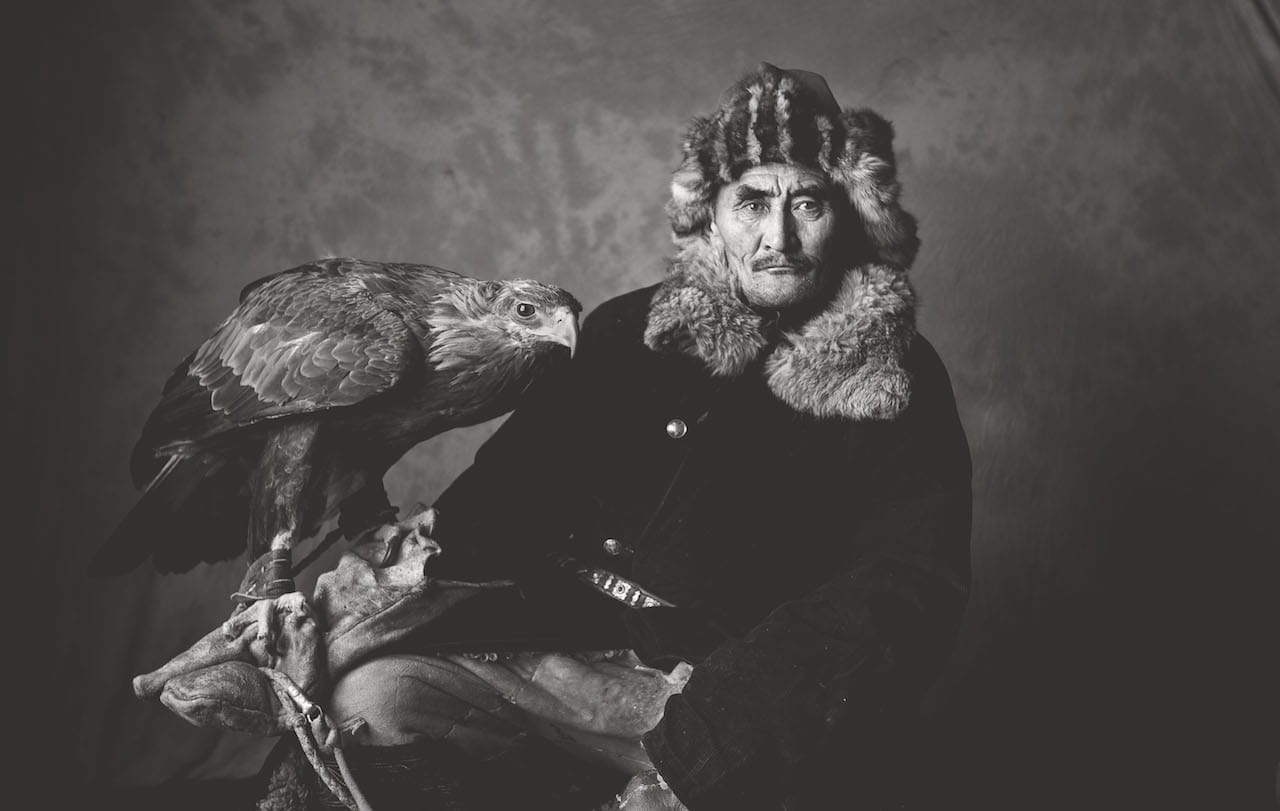
In Mohan’s photographs, the hunters and their families wear these fur pelts proudly, along with elaborately embroidered robes and coats. In the book, 93-year-old Orazkhan Shuinshi, who was known as the oldest and wisest of the eagle hunters, tells his story and laments the loss of the eagle-hunting tradition:
Golden eagles are like no other bird. They want to be with you. They love you. And they love to kill for you. When the time comes to let them go, it’s the hardest thing a man can ever do. … I’ve had more than 20 eagles in my life. Last year I released my last eagle back into the mountains. It was as if a member of my family had left. … This tradition is dying, and there are fewer and fewer old hunters these days. You can have an eagle, but that doesn’t make you a hunter. In the old days, if you didn’t have an eagle next to your home you weren’t a real man. … The young generation today aren’t interested, and there are many things that keep them busy, such as earning money and listening to music. … We should train our children to keep this tradition alive. This is who we are. To the young I would say: the golden eagle is a holy bird; treat eagles as your children. Love and respect them. If you do this, they will give everything back to you.

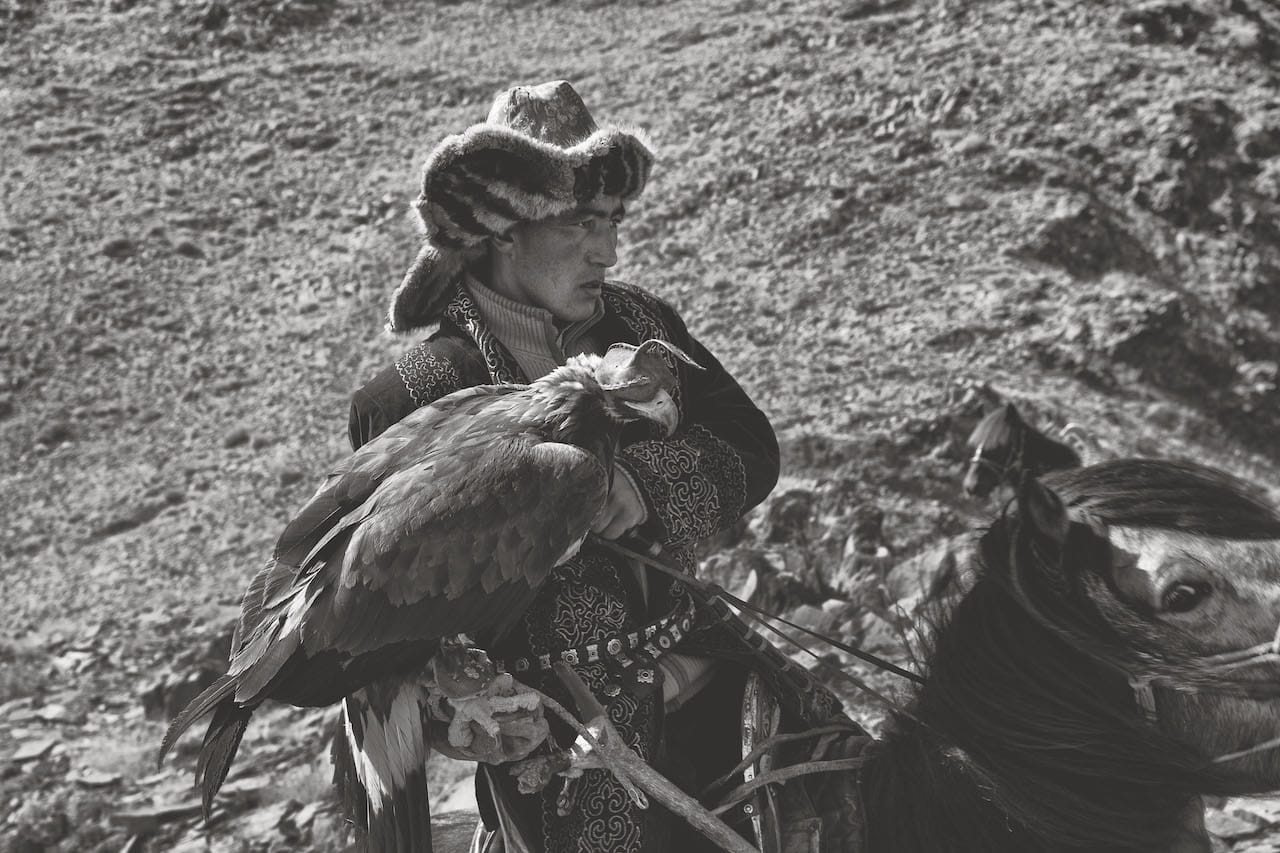
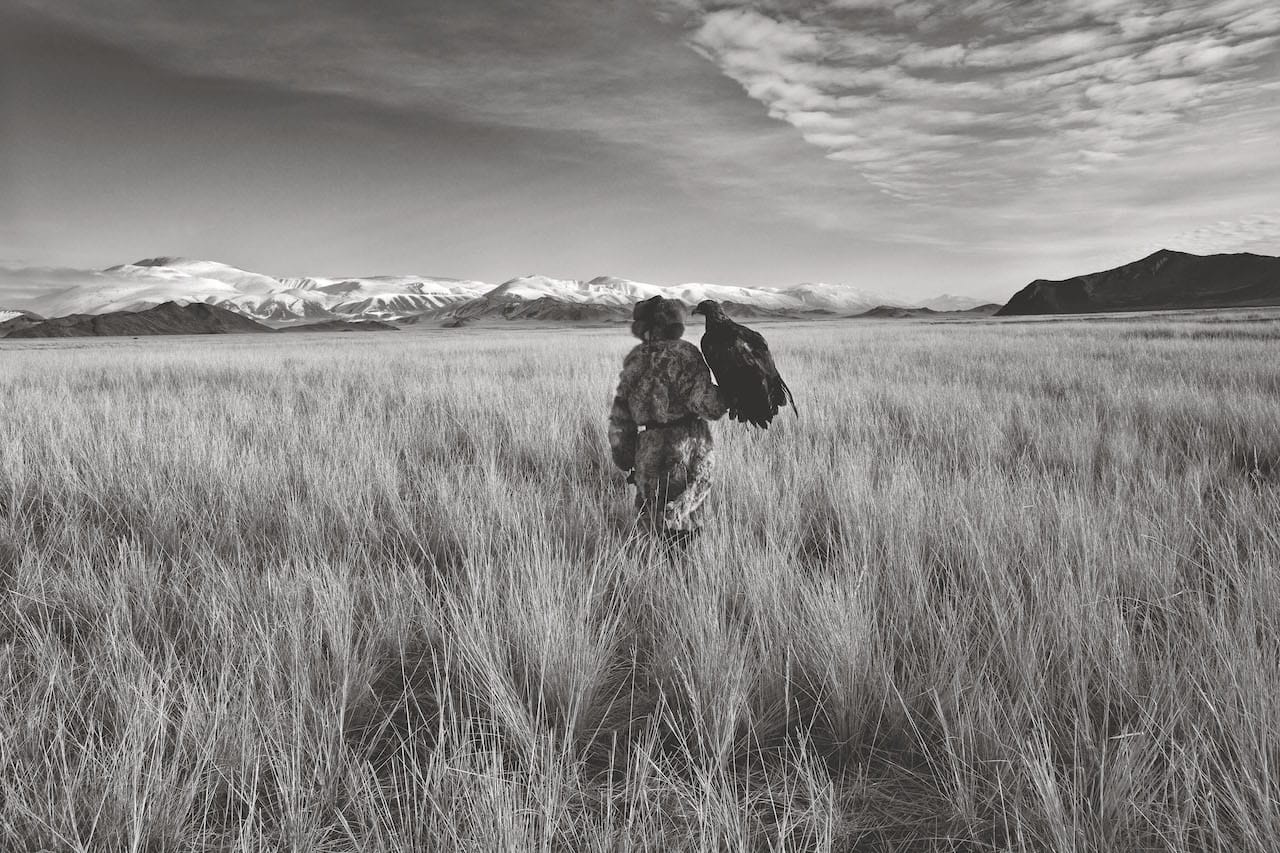
Hunting with Eagles: In the Realm of the Mongolian Kazakhs, by Palani Mohan, is out now from Merrell.





